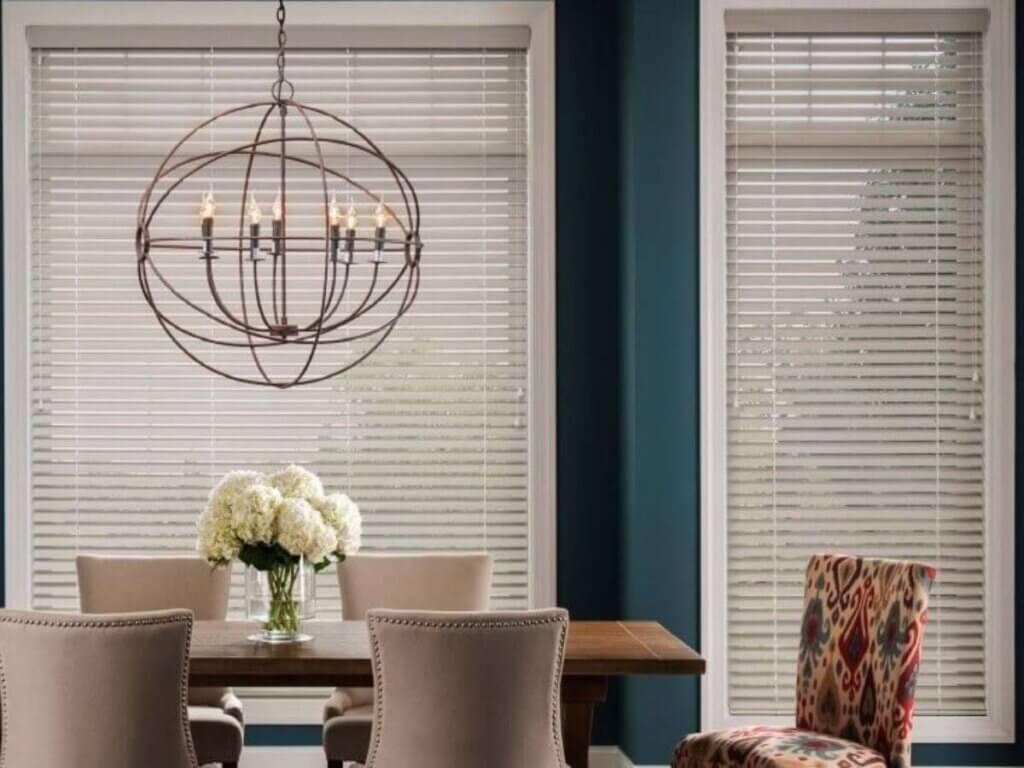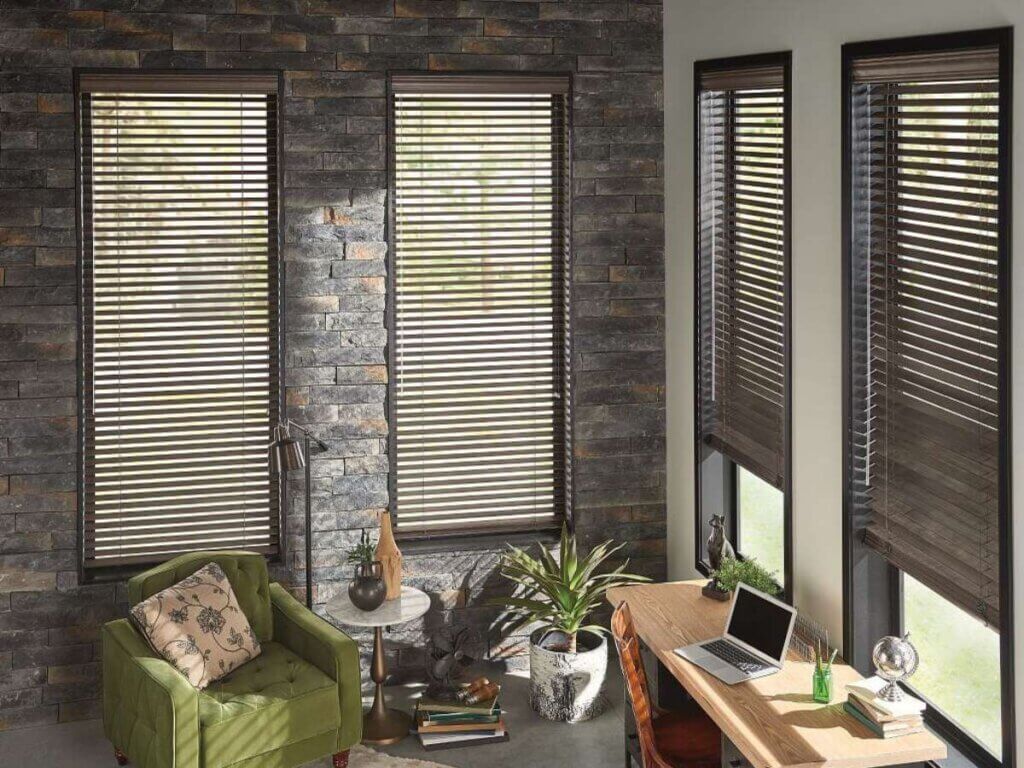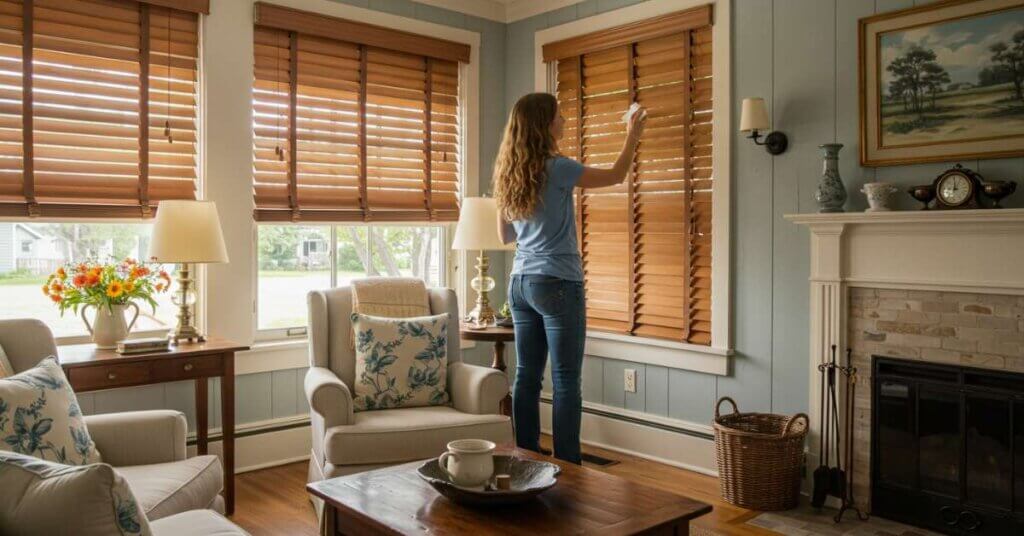If you’ve ever wondered what are blinds, the answer is simple: they’re versatile window coverings made with adjustable slats that help manage light, privacy, and comfort. Blinds remain one of the most popular window treatments because they combine practical function with timeless style.
This guide explains the different types of window blinds, from vertical options to wood, faux wood, aluminum, and even motorized smart blinds. You’ll also find design tips, energy efficiency considerations, and maintenance advice to keep them looking great. By the end, you’ll have a clear understanding of blinds and how to choose the right type for your home.
What Are Blinds? A Clear Answer

Blinds are window treatments featuring adjustable slats that tilt open or closed, allowing you to control light, privacy, and airflow. Unlike shades, which are made of continuous material, blinds rely on rows of slats that can move up, down, or sideways. This versatility makes blinds a popular choice for homeowners seeking both function and style.
Blinds also offer flexibility in design. From classic wood blinds to modern motorized blinds, there’s an option to complement nearly any room. With the right selection, blinds can improve comfort, enhance energy efficiency, and add value to your home.
Main Types of Blinds
Vertical Blinds
Vertical blinds have long vertical slats that glide smoothly from side to side. They are an excellent choice for large windows and sliding glass doors, offering wide coverage and effortless operation. Homeowners also appreciate their ability to filter or block light without compromising accessibility, making them a practical solution for coastal homes with expansive views of glass.
Wood Blinds
Wood blinds bring a sense of warmth and timeless charm to any room. They are crafted from natural materials, making them both durable and elegant, while adding a touch of sophistication to interior spaces. With a wide range of stains and finishes, wood blinds can be customized to complement classic, rustic, or upscale designs.
Faux Wood Blinds
Faux wood blinds replicate the look of real wood but are engineered to resist moisture and warping. This makes them a perfect fit for high-humidity areas, such as kitchens, bathrooms, or homes near the coast. They offer long-lasting durability, are easy to maintain, and provide the aesthetic of natural wood at a more affordable price point.
Aluminum Blinds
Aluminum blinds are lightweight yet strong, making them a reliable and budget-friendly option. Their sleek, modern appearance suits contemporary or minimalist spaces well, and they are available in a wide range of colors. Beyond their stylish appeal, aluminum blinds provide excellent privacy and light control, making them a versatile option for everyday living.
5 Key Factors When Choosing Blinds
1. Light Control and Privacy Options
Blinds excel at adjusting natural light. Tilt the slats for filtered daylight or close them completely for privacy. Bedrooms may benefit from room-darkening designs, while living rooms often require adjustable light control.
2. Energy Efficiency Benefits
Certain blinds enhance insulation by reducing heat gain in the summer and retaining warmth in the winter. Faux wood blinds and well-fitted blinds help homeowners cut energy costs while maintaining a comfortable indoor temperature.
3. Style Guide and Design Tips
Blinds should complement your overall home decor. Choose wood tones for classic interiors, sleek aluminum blinds for modern spaces, and vertical blinds for open, airy layouts. Consider cordless blinds for safety and clean lines, or motorized blinds for convenience in hard-to-reach windows.
4. Measuring for Blinds Installation
Professional measuring ensures blinds fit perfectly, avoiding gaps or uneven operation. Precise installation also enhances energy efficiency and extends the life of your blinds.
5. Cleaning Blinds and Maintenance
Regular dusting with a microfiber cloth or soft brush keeps blinds looking fresh. For deeper cleaning, gently wipe slats with mild soap and water-safe methods suited to the material. Consistent care maintains pristine condition and extends longevity.
Quick Comparison: Types of Blinds
Type of Blinds | Best For | Key Benefit |
Vertical Blinds | Sliding doors, wide windows | Smooth operation, modern style |
Wood Blinds | Living areas, offices | Warmth, natural beauty |
Faux Wood Blinds | Bathrooms, kitchens, coastal homes | Moisture resistance, durability |
Aluminum Blinds | Modern interiors | Sleek design, affordability |
FAQs About What Are Blinds
1. What makes blinds different from shades?
Blinds use adjustable slats, whereas shades are made from a single continuous piece of material. This means blinds allow greater control over light and privacy. Shades, on the other hand, tend to provide a softer look and more uniform coverage.
2. Are cordless blinds safer for families?
Yes, cordless blinds eliminate hanging cords, thereby reducing the risks to children and pets. They’re also easier to operate and contribute to a cleaner, streamlined appearance. Many homeowners now prefer cordless designs as a standard upgrade for both safety and style.
3. Can motorized blinds connect to smart home systems?
Absolutely. Motorized blinds can be integrated with smart home platforms, enabling control through voice commands or mobile apps. This adds convenience, especially for tall windows or spaces where frequent adjustments are needed.
Ready to Choose Your Blinds?

Blinds are more than just window coverings—they’re versatile tools for light control, privacy, energy efficiency, and design. With numerous types available, selecting the right blinds for your home ensures both comfort and style.
If you’re ready to explore options tailored to your home in Maryland or Delaware beaches, schedule a consultation with Made in the Shade Eastern Shore. Our experts will guide you through the best types of blinds and handle precise installation for a perfect fit.


